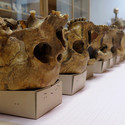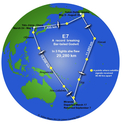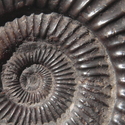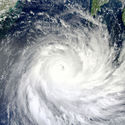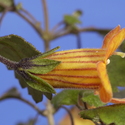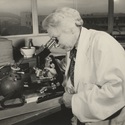A more precise timeline now shows Aotearoa was first settled in the North Island before the settlers expanded south and then retreated again when the climate changed.
This article has been republished from The Conversation under Creative Commons licence CC BY-ND 4.0. It was originally published under the title New research shows ancestral Māori adapted quickly in the face of rapid climate change and is written by Magdalena Bunbury and Dr Fiona Petchey.
When the ancestors of Māori made landfall in Aotearoa some 750 years ago, it marked the final stop of the greatest expansion of human migration in prehistory.
Much of their story – exactly when they arrived and where they initially settled, how quickly the population grew, and how they sustained themselves and adapted during rapidly changing climate conditions – has remained elusive until now.
Our research traces the first 250 years of settlement, including changes in resource availability and population growth. It provides a more precise timeline for arrival and settlement, beginning as early as 1250–1270.
We also demonstrate for the first time a difference in the age of settlements in the North and South islands. The research shows that Māori adapted quickly to their new environment and again during later periods when temperature and rainfall changed significantly.
A more precise timeline of arrival
People travelled from tropical islands in East Polynesia at a time when a warm climate facilitated travel across the world’s largest ocean.
Researchers have long debated the exact timing of their first settlement, with estimates varying between the 12th and 14th centuries, depending on the material selected for radiocarbon dating.
We show that early settlers reached the North Island first, between 1250 and 1270, a decade before the South Island became more popular.
At the time of settlement, the south had colonies of the large flightless moa. The early settlers rapidly adapted to this temperate climate, living on a diet of moa, seafood and vegetables grown in their garden plots.
But then the Little Ice Age interfered with this lifestyle. After 1350, conditions became significantly colder in the south. By around 1400–1420, moa hunting became uneconomic and put these fledgling communities under immense pressure. Once again, people had to adapt quickly.
Models developed from radiocarbon dates and the distribution of archaeological sites indicate the population shifted back to the north and grew between 1350 and 1450. In the north, soils were ideal for agriculture and temperatures were warmer.
New scientific approach
Estimates of arrival and settlement in earlier studies and models vary depending on the material they used. For example, radiocarbon dates of the Pacific rat (Rattus exulans or kiore) tell a story about the spread of rats following the introduction by Māori ancestors. This study documents an explosion in the rat population but not information on the earliest human settlement date.
Likewise, radiocarbon dates on moa eggshell and bone tell us about the timing of moa-hunting activities but little about activities elsewhere.
This piecemeal approach has blurred the settlement chronology and contributed to the notion of a ‘mass migration’ event. These studies also ignored dates on marine materials, one of the most commonly dated sample types.
In a previous study, we demonstrated that dates of midden shells could increase the accuracy of models if we had a better understanding of how radiocarbon in the ocean changed over time.
The development of a regional marine calibration curve that mapped this change allowed us to include more than 800 shell radiocarbon dates in the current study. This curve doubled the number of dates available for analysis.
It was also necessary to develop a new approach to modelling that combined terrestrial and marine radiocarbon data sets. The increased precision and accuracy of these new models enabled us to draw links between the number and distribution of archaeological sites, climate, resources and deforestation trends.
Why our results are more precise
We scoured journal papers and books to assemble more than 2,250 dates, the largest radiocarbon data set from any island context. We carefully evaluated the archaeological context and scientific reliability of each date and removed almost 700 problematic dates before modelling began.
Differences between the terrestrial and marine calibration curves used to convert radiocarbon measurements into calendar ages enabled us to refine ‘wiggles’ that result in multiple ranges for some early settlement events.
This research goes only a small way to providing a time baseline for understanding the complexity of ancestral Māori society. Future work aims to achieve the precision needed to establish more links between people, climate and time.
Related content
Discover more about Dr Fiona Petchey’s work on using carbon-14 (C-14) to date artefacts of historical importance.
Read how whakataukī can give us insight into the moa’s conservation and extinction in Dead as the moa: oral traditions show that early Māori recognised extinction.
Learn about ‘wiggle matching’ and the complexities of radiocarbon dating through research into the volcanic eruption that created Lake Taupō in Explosive lies – how volcanoes can lie about their age, and what it means for us.
This interactive explores the C-14 carbon dating process.
Learn more about other technologies that are contributing to our knowledge of human evolution in Evolutionary research – advancing our understanding of us and techniques for refining samples for AMS dating of palaeolithic bones and other artefacts.
In 2008 scientists published research on how they used radiocarbon dating on old rat bones and seeds to establish their age.
Activity ideas
The activity Investigating middens helps students understand what ancient middens can tell us about past lives and what discarded rubbish can tell us indirectly about the environment. You could adapt the extension idea so students also identify the organic rubbish that would survive into the future and could be dated by C-14 methods.
The activity Radioactive decay models the radioactive decay process for carbon-14 by flipping coins. It features the randomness and exponential nature of radioactive decay.
Useful links
Find out more about some of the research mentioned in this article:
- A new chronology for the Māori settlement of Aotearoa (NZ) and the potential role of climate change in demographic developments, PNAS, Volume 119 | No. 46. 2022.
- Climate windows for Polynesian voyaging to New Zealand and Easter Island, PNAS, Volume 111 | No. 41. 2014.
- Extinct New Zealand megafauna were not in decline before human colonization, PNAS, Volume 111 | No. 13. 2014.
- Global Signatures and Dynamical Origins of the Little Ice Age and Medieval Climate Anomaly, Science, Volume 326, Issue 5957, 2009
- Using rat-gnawed seeds to independently date the arrival of Pacific rats and humans in New Zealand, Sage Journals, Volume 14, Issue 16, 2004, (note this research article has restricted access to the full version).
- High-precision dating and ancient DNA profiling of moa (Aves: Dinornithiformes) eggshell documents a complex feature at Wairau Bar and refines the chronology of New Zealand settlement by Polynesians, Journal of Archaeological Science, Volume 50, October 2014.
- Mass Migration and the Polynesian Settlement of New Zealand, Journal of World Prehistory, Volume 30, 2017.
- Vital evidence: Change in the marine 14C reservoir around New Zealand (Aotearoa) and implications for the timing of Polynesian settlement, Scientific Reports, Volume 10, Article number: 14266 (2020)
- A wiggle-match date for Polynesian settlement of New Zealand, Antiquity. Volume 77(295), 2003.
Articles from The Conversation:
- See this article from 2021 arguing that Aotearoa New Zealand's early Polynesian settlement should be recognised with World Heritage Site status.
- In 2022 the article Linguistics locates the beginnings of the Austronesian expansion – with Indigenous seafaring people in eastern Taiwan was published.
On the Royal Society of New Zealand Te Apārangi website, read about work being undertaken by Associate Professor Fiona Petchey on constructing a precise and detailed picture of the past, using carbon dated shells from Te-Moana-Nui-a-Kiwa, the Pacific Ocean.
Listen to 95bFM who spoke to Dr Fiona Petchey about her research on the timing of Māori settlement in Aotearoa.
Acknowledgements
This article was written by Magdalena Bunbury (Postdoctoral research fellow, James Cook University) and Dr Fiona Petchey (Associate Professor and Director, Radiocarbon Dating Laboratory, Te Aka Mātuatua – School of Science, University of Waikato). The article was originally published in The Conversation, 9 November 2022. Read the original article, New research shows ancestral Māori adapted quickly in the face of rapid climate change.
![]()






